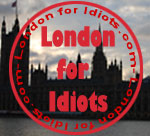On the London Da Vinci Code trail
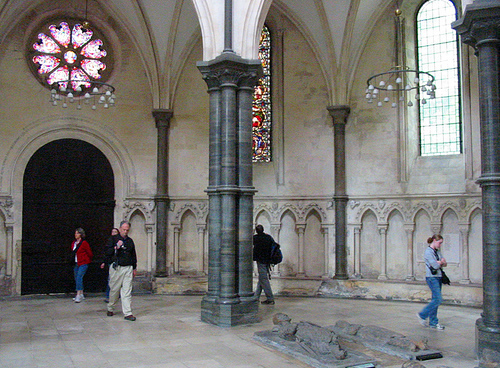
Starting in Paris, France with a memorable scene in the Louvre, Dan Brown’s thriller climaxes in England, as the increasingly beleaguered symbologist Robert Langdon (Tom Hanks) and cryptologist Sophie Neveu (Audrey Tatou) look for the mysterious Teacher!
Follow in the footsteps of Tom Hanks and discover the hidden secrets of one of England’s most picturesque counties.
London Locations for the 'Da Vici Code' |
"Realizing that the clue to the cryptex might not be in France but in England, Langdon, Neveu, and Teabing board Teabing's private plane for London. In midair, the three manage to open the cryptex, but the contents, instead of revealing the secrets of the Grail, yield only another clue wrapped around yet another cryptex.
Once on the ground, the threesome, hastily interpreting this latest clue, make a mad dash down Fleet Street to a Knights of the Templar fortress."
|
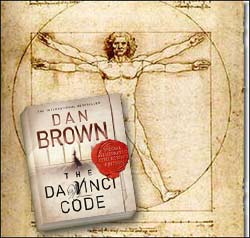 |
Fleet Street. The famous London street follows the course of, and is named after, one of the city's ghost rivers. The Fleet, so called by the Anglo-Saxons, spent most of its centuries above ground as an open sewer until banished below in 1766. It still flows underfoot, now a sanctioned section of London's sewer system.
Since the end of the 15th century Wynkyn de Worde set up England's first printing press here, and after 1702, when the first newspaper, the Daily Courant, moved in, the term "Fleet Street" has been synonymous with newspaper journalism. The papers themselves all moved out during the 1980s, but the British press is still collectively known as "Fleet Street." To find a relic from the old days, check out the black-glass-and-chrome art deco building that was once the hub for the Daily Express (the paper has since relocated to south of the river).
TUBE: Blackfriars or St. Paul's.
|
 |
As the quest continues, the puzzles become more complex. Only one thing remains certain – the answer lie somewhere in London.
A labyrinth of ancient buildings, dramatic courtyards and exquisite gardens lead you through London’s extraordinary historical centre to Temple Church. Built by the Knights Templar in the 12th century, this momentous sanctuary exudes historic grandeur.
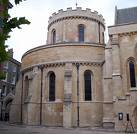 |
Temple Church. This house of worship, famed for "the Round," its rare circular nave, was built by the Knights Templar in the 12th century. The Red Knights (so called after the red crosses they wore) held their secret initiation rites in the crypt here. Having started out poor, holy, and dedicated to the protection of pilgrims, they grew rich from showers of royal gifts, until in the 14th century they were charged with heresy, blasphemy, and sodomy, thrown into the Tower of London, and stripped of their wealth. It is a very fine Gothic-Romanesque church, whose chancel ("the Oblong," dating from 1240) has been accused of perfection. (See topmost pic)
ADDRESS: Inner Temple Lane, off Fleet Street.
NEIGHBORHOOD: Bloomsbury.
TUBE: Temple. |
Nefarious Doings in St. James's Park
A character besotted with the Holy Grail has followed the trio to London, planning to usurp control of the secrets Langdon and Neveu continue to discover. Before he makes his move, though, he slips into St. James's Park to deal with an accomplice who has misbehaved.
Horse Guards Parade. The Horse Guards Parade is a huge ground off Whitehall. During Henry VIII’s reign tournaments were held there as well as the annual celebration of Queen Elizabeth I birthday. Twice a day a mounted guard is changed here ceremonially. The buildings were completed in 1755 and were designed by William Kent.
This square, on Horse Guards Road, at the east end of St. James's Park, is a fine place for mayhem. It was once the tiltyard of nearby Whitehall Palace, where jousting tournaments were held. The vast square is now notable mainly for the annual Trooping of the Colour ceremony. From Horse Guards Parade, one gets an untrammeled view of Saint James's Park, to which it's adjoined.
TUBE: Jubilee line to Westminster station
|
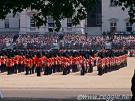 |
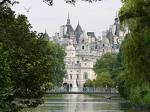 |
Saint James's Park. It’s here that the ‘The Teacher’ disposes of his unwanted accomplices and is one of London’s most picturesque Royal Parks. It’s flanked by three majestic palaces, and has extraordinary views of Big Ben and the Houses of Parliament.
Three palaces border this gloriously green park: the ancient Palace of Westminster, now the Houses of Parliament; the Tudor St. James's Palace; and Buckingham Palace. Acclaimed as the most royal of the royal parks, Saint James's Park is London's smallest, most ornamental park, as well as the oldest; it was acquired by Henry VIII in 1532 for a deer park. Henry VIII built the palace next to the park, which was used for hunting only (dueling and sword fights were forbidden). James I improved the land and installed an aviary and zoo, and Charles II laid out formal gardens. St. James's Park makes a spectacular frame for the towers of Westminster and Victoria -- especially at night, when the illuminated fountains play and the skyline beyond the trees looks like a floating fairyland. Read More 
ADDRESS: Middle Temple Lane.
TUBE: St. James's Park or Westminster.
|
Cracking the Code
A portion of the second cryptex's message, "In London lies a knight a Pope interred," finds new meaning for Langdon with the aid of a helpful King's College librarian's computer.
King's College. King's is one of the oldest and largest colleges of the University of London with 13,800 undergraduate students and some 5,300 postgraduates in nine schools of study. Twenty-four of the College’s subject-areas were awarded the highest rating of 5* and 5 for research quality in the last research assessment exercise, demonstrating excellence at an international level. King's College has several campuses on both sides of the Thames, just above Westminster Abbey and the Houses of Parliament. The Department of Theology and Religious Studies is in the School of Humanities.
According to Brown, "King's College houses its Department of Theology and Religious Studies adjacent to Parliament on property granted by the Crown." The college's religion department is also the home of the Research Institute in Systematic Theology, one of the world's most advanced religious research libraries. Brown describes the research room vividly: "a dramatic octagonal chamber dominated by an enormous round table around which King Arthur and his knights might have been comfortable were it not for the presence of twelve flat-screen computer workstations."
ADDRESS: The Strand.
NEIGHBORHOOD: St. James's.
TUBE: Temple.
|
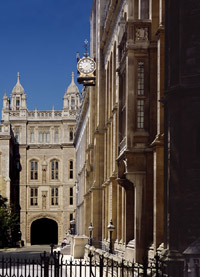 |
A Final Clue
As Langdon and Neveu scour the tomb of Sir Isaac Newton for a final clue that will crack open the second cryptex, they receive a message from a rival character to meet him in the Chapter House at Westminster Abbey. In the ensuing struggle, they vanquish their nemesis.
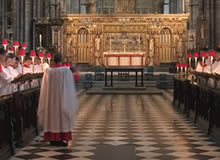 |
Westminster Abbey. Nearly all of England's monarchs have been crowned at Westminster Abbey, and many of them are buried here, but the Abbey's origins remain uncertain. The first church on the site may have been built as early as the 7th century by the Saxon king Sebert. A Benedictine abbey was established here in the 10th century.
The Chapter House, a stunning octagonal room supported by a central column and adorned with 14th-century frescoes, is where the King's Council and, after that, an early version of the Commons met between 1257 and 1547. Underfoot is one of the finest surviving tiled floors in the country. The Abbey Museum is in the undercroft, which survives from Edward the Confessor's original church, and includes a collection of deliciously macabre effigies made from the death masks and actual clothing of Charles II and Admiral Lord Nelson. Sir Isaac Newton's grave and tomb are near the choir screen, at the north entrance to the choir.
Read More  ADDRESS:
ADDRESS: South side of Parliament Square.
TUBE: Westminster. |
Finish your gripping tour of London at the National Gallery, symbolically located on the north side of Trafalgar Square.
National Gallery. This world-class gallery houses thousands of precious artworks including Da Vinci’s celebrated Virgin of the Rocks, which Langdon uses to finally unlock the secrets of The Da Vinci Code.
According to Brown, "King's College houses its Department of Theology and Religious Studies adjacent to Parliament on property granted by the Crown." The college's religion department is also the home of the Research Institute in Systematic Theology, one of the world's most advanced religious research libraries. Brown describes the research room vividly: "a dramatic octagonal chamber dominated by an enormous round table around which King Arthur and his knights might have been comfortable were it not for the presence of twelve flat-screen computer workstations."
ADDRESS: The Strand.
NEIGHBORHOOD: St. James's.
TUBE: Temple.
|
 |
Cracking the Code
Getting There: Neveu, Langdon, and Sir Teabing zip from an airport near Château Villette in Teabing's private plane and land at Biggin Hill Airport, 12 miles from central London. You're more likely to arrive at Heathrow, Gatwick, or Stansted airport. If you're coming from Paris, you can ride on the train through the Channel Tunnel.
Getting Around: All the London sights in The Da Vinci Code are in a compact area east and south of Trafalgar Square and are accessible by bus or the Tube.
Suggested Route: With one exception, Kings College London, you can easily walk this 2-mile route in the order the sights appear in The Da Vinci Code. Take the Tube to St. Paul's Station and head west on Ludgate Hill to Fleet Street, continuing until you get to Temple, where you'll see the Temple Bar Memorial (1880), a young bronze griffin. Opposite the statue is an elaborate stone arch through which you pass into Middle Temple Lane, which runs south all the way to the Thames. Temple Church will be on your left as you head toward the river. After you've explored the church, reverse course to the statue and continue west.
Along the Strand you'll pass by Kings College London. After exploring the campus, continue west on the Strand to Trafalgar Square. Just south of the square on Whitehall is the Horse Guards Parade, which edges St. James's Park. Continue south to Westminster Abbey. Opus Dei's London office, which is not open to the public, is more than 3 miles west of Westminster Abbey, just north (on Orme Court, off Bayswater Road) of the northwest corner of Kensington Gardens.
If you're not up for this much walking, an alternative is to take Bus 11, which travels along Ludgate and Fleet Street to Trafalgar Square and Westminster.
|
